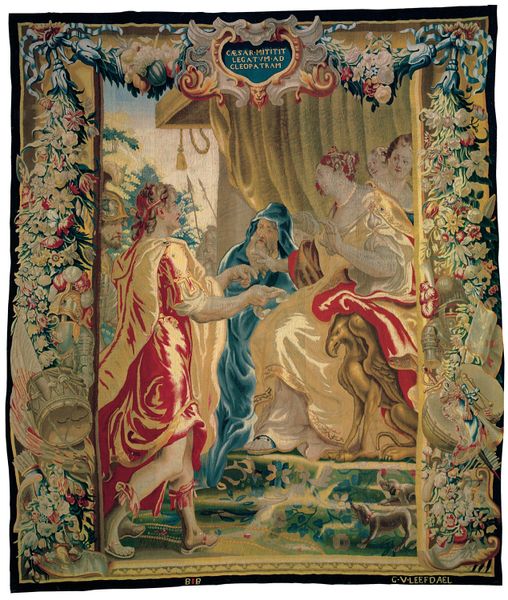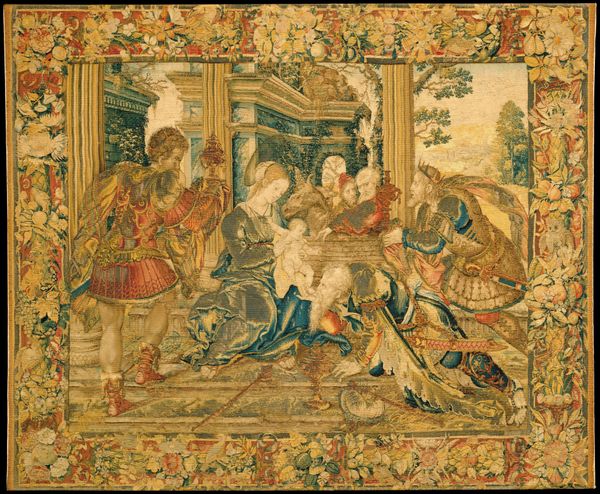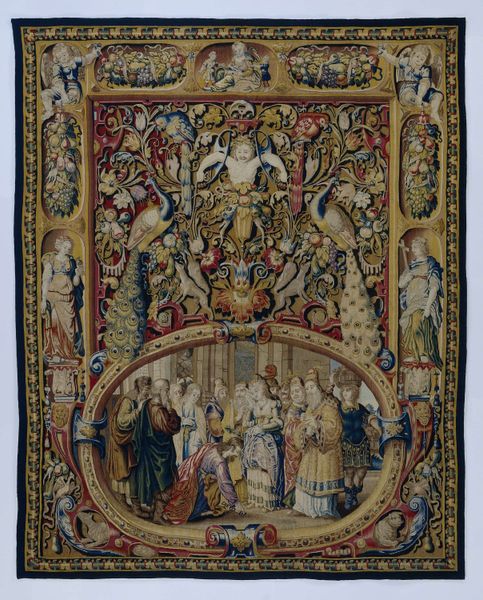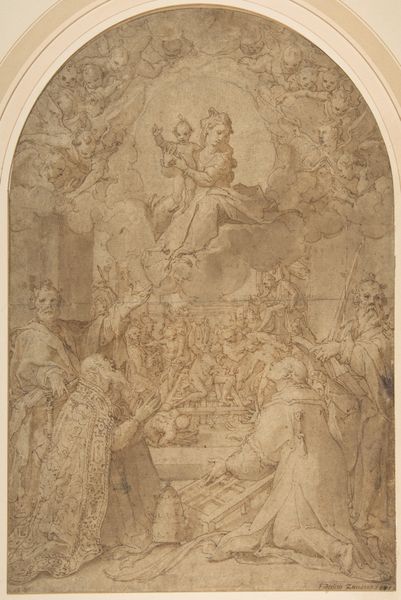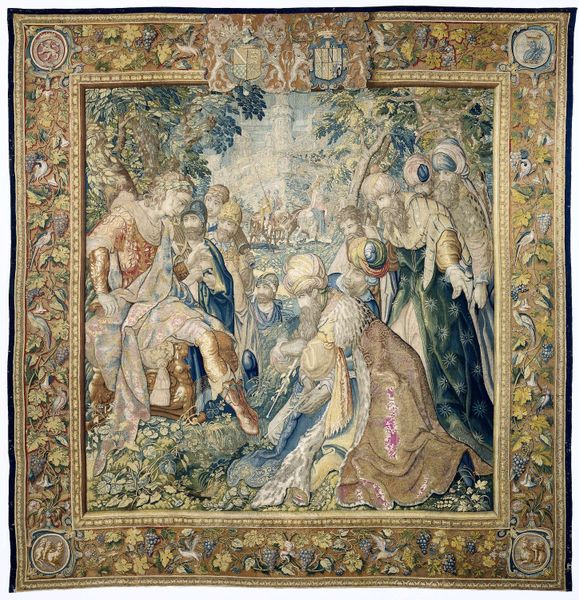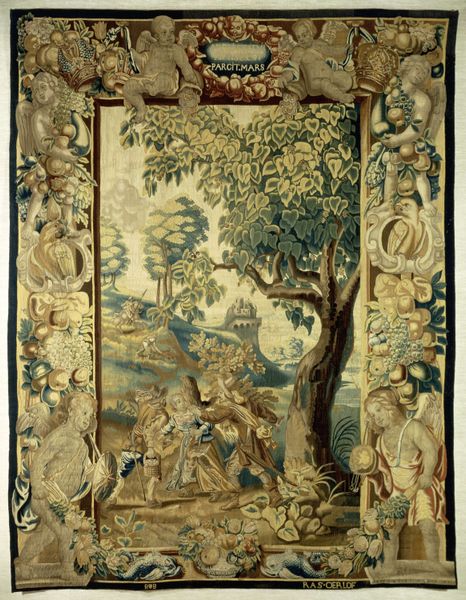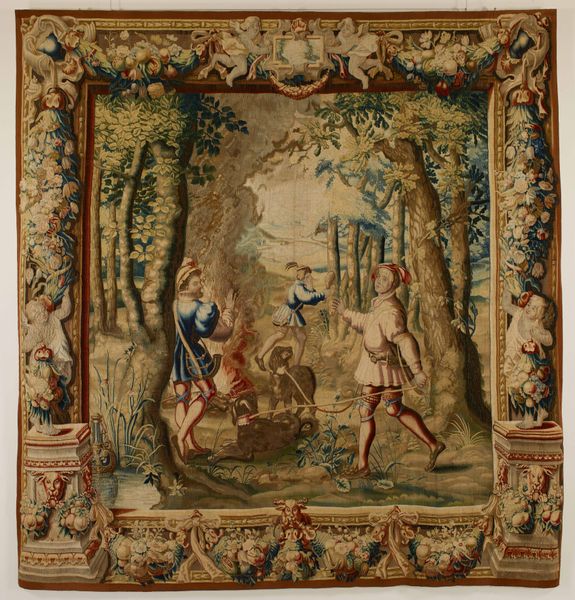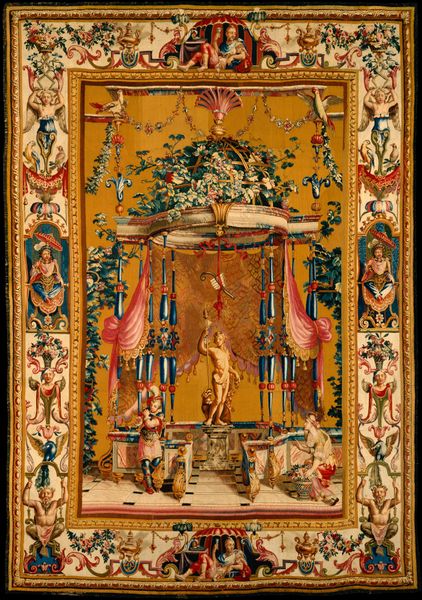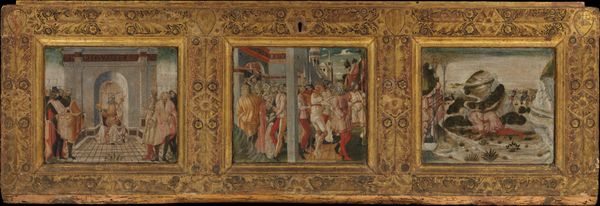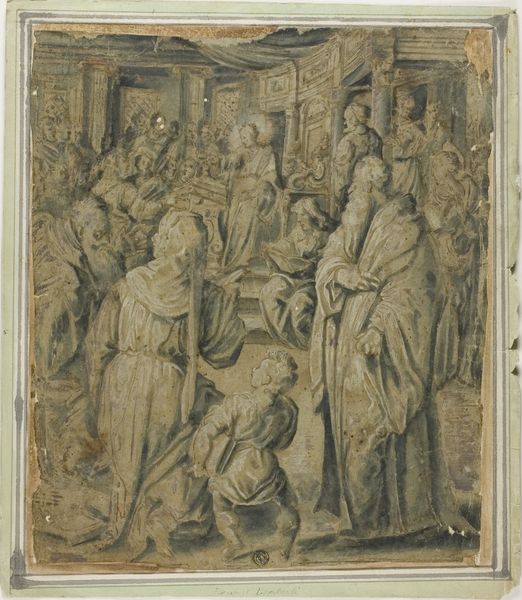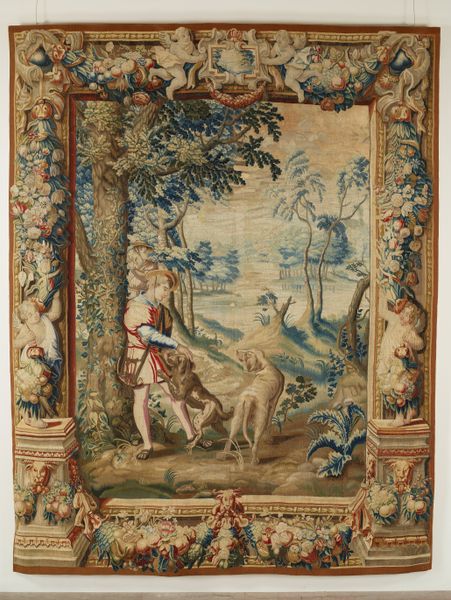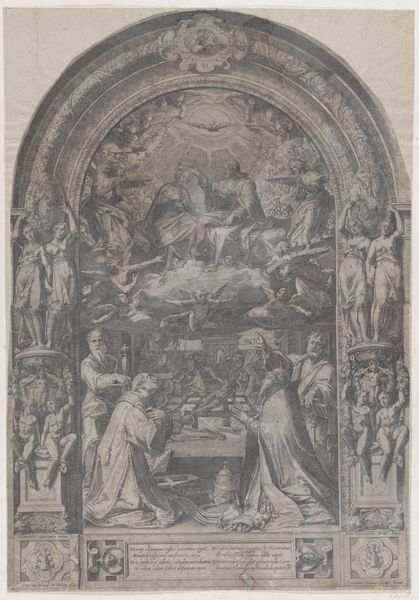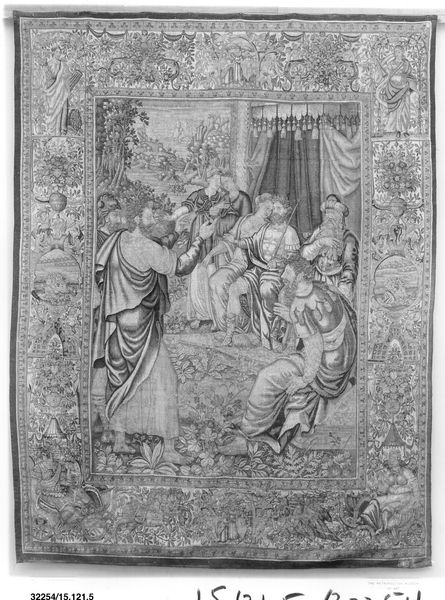
fibre-art, weaving, textile, wool
#
portrait
#
fibre-art
#
narrative-art
#
baroque
#
weaving
#
textile
#
wool
#
figuration
#
genre-painting
#
history-painting
Dimensions: 351.2 × 424.8 cm (138 1/4 × 167 1/4 in.)
Copyright: Public Domain
Curator: Looking at this large textile piece titled "Tapestry (Four Servants)," dating back to around 1650, and currently residing here at the Art Institute of Chicago. Jan van Leefdael created it using the intricate process of weaving wool, primarily. Editor: It has a rather stately air about it, wouldn't you agree? The classical architectural motifs, even the somewhat muted tones…it whispers of privilege. But it makes me consider, who are these ‘servants’ exactly, and what’s being served in this tableau? Curator: From a material perspective, consider the labor involved in producing such a tapestry. The wool had to be sourced, processed, spun into thread, dyed, and then meticulously woven on a loom, perhaps by multiple artisans in Leefdael's workshop. It blurs lines: is it a craft object, or fine art? How was the creation divided based on skill? Editor: That’s the question, isn't it? The image depicts women attending to another woman. There’s an immediate class dynamic presented; bodies positioned in service. Yet, in this context, 'servant' carries different implications when converted into commodity. Where they compensated justly for the final price it may demand? Or even afforded rights that may include freedom? It presents social strata that is both veiled and amplified, don’t you think? Curator: Absolutely. Thinking of wool—this textile had a function within a particular societal strata: for display, warmth, asserting the patron’s social standing… What were the trade networks which were active, through which its material traveled to be produced into something that signifies power for others. Editor: I'm captivated by the visual rhetoric and the ways it conceals its sociopolitical aspects, particularly related to the role of women during the Baroque era. I find it deeply fascinating that through depictions such as these that domestic and power relationships were subtly affirmed while being broadcast to society. I'm certain the material production reveals further obscured social details, such as class struggles. Curator: Indeed. From analyzing raw materials and the modes of production, a whole story is unraveled on the value and complexities embedded within a beautiful and deceptively quiet object of functional art. Editor: This tapestry offers just a hint of complexity when we dare question how labor, class, and visibility play into constructing perceptions about both status and agency. The threads themselves are a part of something much grander, in that sense.
Comments
No comments
Be the first to comment and join the conversation on the ultimate creative platform.
